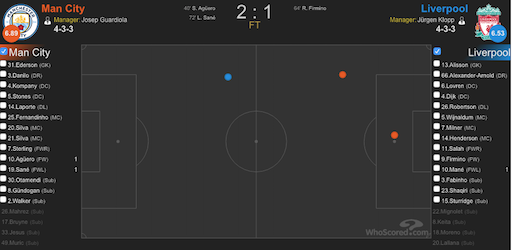WORLD CLASS COACHING
Defend Like the Pro's
By Luca Bertolini

Table of Contents
PART THREE
Defending Data - Second Game
Defending Data - Second Game
The basic match data confirm that the second leg was less tactical than the previous one and that open play allowed both teams to finish more than in the first match.
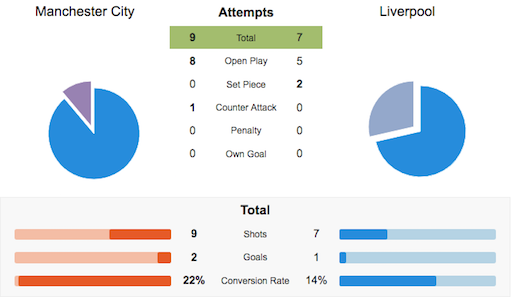
The defense situations against the open play created never ending transition phases on the field, and much more through the middle third...
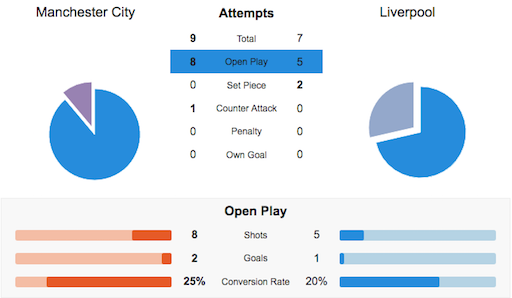
...as the only real counter attack of the match led to the winning goal of Manchester City, thanks to Sanè.
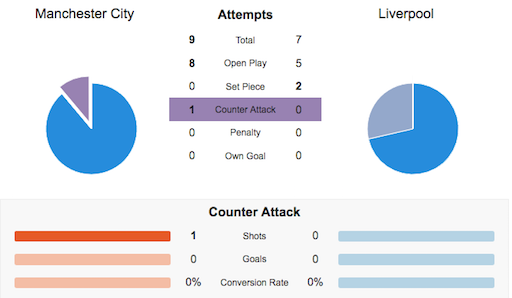
Looking at the dispossession data, we can realize that City was able to keep the possession much more than in the first leg and that Guardiola's team learned how press high Liverpool building up, but without opening spaces at the back, as the ball was usually won inside the middle third. City won almost all the duels; on the other hand, it's clear that the lower pressure of Liverpool didn't allow Klopp's squad to regain the possession very often.
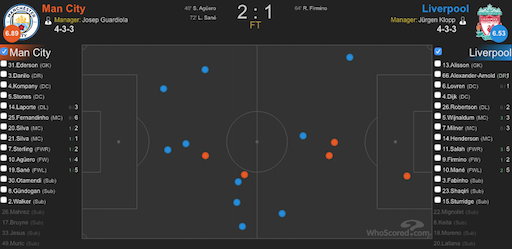
The interception heat map confirms again the left side of the attacking phase overload by Manchester City and how Liverpool was forced to defend shifting across the right side of the field. Despite the good number of interceptions for Klopp's Reds, the first goal of the match was the result of combination play along that flank.
On the other side, the interceptions of Manchester City are clearly a proof of the center-oriented attacking phase of Liverpool, as the flanks were utilized for building up, trying to play in behind the narrow defense shape of citizens to finish.
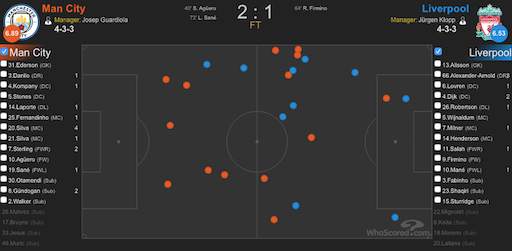
Tackles data are another proof that Liverpool shaped a middle third block, rather than pressing high. Guardiola's team’s top level technical performance in building up forced Liverpool to defend deeper, and, on the other side, the high pressure of Man City had the goal to slow down and to delay the possession phase of Liverpool, then trying to counter it directly in the middle third.
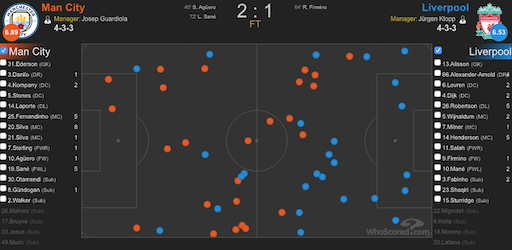
Klopp's team was anyway enough good to provoke mistakes during City possession phase in the middle third, exploiting the lower mid block of six players we already analyzed before; the average of turnovers shows how Liverpool was good at pressing inside the defense half.
Again, the number of turnovers shows the trend of Manchester City in playing toward the center left part of the field.
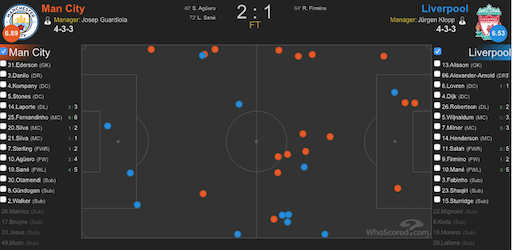
Committed fouls are another proof of a middle third battle and how City prevent Liverpool from playing in behind, stopping the attempts as soon as possible, if the ball was not recovered.
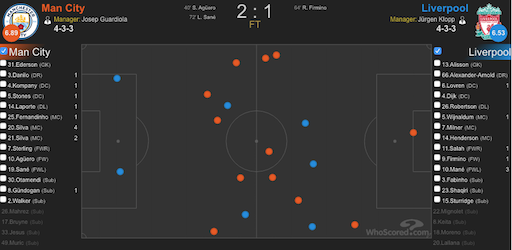
These are the head clearances data that shows how Manchester City had to fight again against long balls toward the box or anyway in behind the defense line, as in the first leg. The few head clearances of Liverpool defense came from corner kicks or switches of side from the left to right, when Sterling was served on the run from the overload opposite flank. These data are interesting, to notice even better that the second leg was more open play and possession oriented match, then the first one, when both teams though about how not to concede goals (playing long balls to keep the midfielders in more defensive positions), rather than looking a way to score.
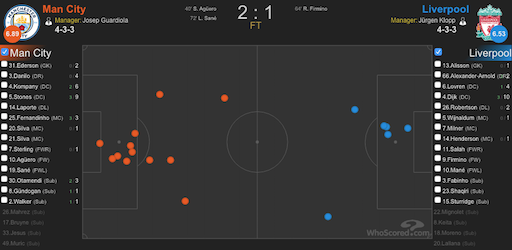
Man City was much better on aerial duels on Liverpool...

Feet clearances increased in this second leg and they were located much deeper inside the defensive third; this means that both teams arrived to the final stage of the match much easier than in the first leg, thanks to a more open play style.
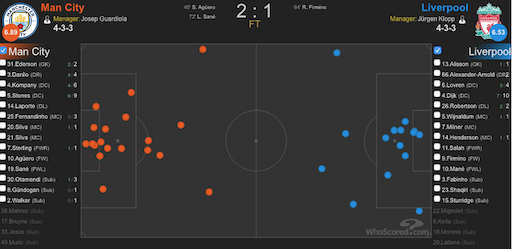
The fewer offside fouls, than in the first match, confirm that the defense lines were placed deep, following a tactical solution of the first leg that helped both teams to not concede goals.
